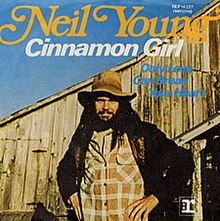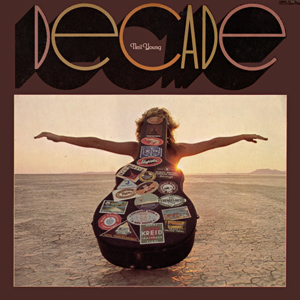
Decade is a compilation album by Canadian–American musician Neil Young, originally released in 1977 as a triple album and later issued on two compact discs. It contains 35 of Young's songs recorded between 1966 and 1976, among them five tracks that had been unreleased up to that point. It peaked at No. 43 on the Billboard Top Pop Albums chart, and was certified platinum by the RIAA in 1986.

Tonight's the Night is the sixth studio album by Canadian / American songwriter Neil Young. It was recorded in August–September 1973, mostly on August 26, but its release was delayed until June 1975. It peaked at No. 25 on the Billboard 200. The album is the third and final of the so-called "Ditch Trilogy" of albums that Young released following the major success of 1972's Harvest, whereupon the scope of his success and acclaim became so difficult for Young to handle that he subsequently experienced alienation from his music and career.

After the Gold Rush is the third studio album by the Canadian-American musician Neil Young, released in September 1970 on Reprise Records. It is one of four high-profile solo albums released by the members of folk rock group Crosby, Stills, Nash & Young in the wake of their chart-topping 1970 album Déjà Vu. Young's album consists mainly of country folk music along with several rock tracks, including "Southern Man". The material was inspired by the unproduced Dean Stockwell-Herb Bermann screenplay After the Gold Rush.

Crazy Horse is an American rock band best known for their association with Neil Young. Beginning in 1969 and continuing to the present day, they have been co-credited on a number of Young's albums, with 15 studio albums and numerous live albums being billed as by Neil Young and Crazy Horse. They have also released six studio albums of their own, issued between 1971 and 2009.

Everybody Knows This Is Nowhere is the second studio album by Canadian-American musician Neil Young, released in May 1969 on Reprise Records, catalogue number RS 6349. His first with longtime backing band Crazy Horse, it emerged as a sleeper hit amid Young's contemporaneous success with Crosby, Stills, Nash & Young, ultimately peaking at number 34 on the US Billboard 200 in August 1970 during a 98-week chart stay. It has been certified platinum by the RIAA.
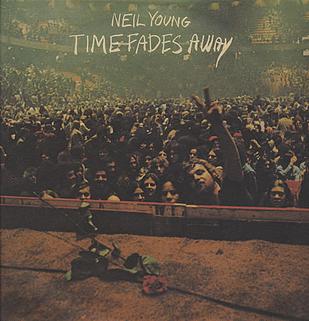
Time Fades Away is a 1973 live album by Canadian-American musician Neil Young. Consisting of previously unreleased material, it was recorded with the Stray Gators on the support tour following 1972's highly successful album Harvest. Due to Young's dissatisfaction with the tour, it was omitted from his catalogue and not released on compact disc until 2017. The album is the first of the so-called "Ditch Trilogy" of albums that Young recorded following the major success of Harvest, whereupon the scope of his success and acclaim became so apparent that Young subsequently experienced alienation from his music and career.
Danny Ray Whitten was an American guitarist and songwriter, best known for his work with Neil Young's backing band Crazy Horse, and for the song "I Don't Want to Talk About It", a hit for Rod Stewart and Everything but the Girl.

"Down by the River" is a song composed by Neil Young. It was first released on his 1969 album with Crazy Horse, Everybody Knows This Is Nowhere. Young explained the context of the story in the liner notes of his 1977 anthology album Decade, stating that he wrote "Down by the River," "Cinnamon Girl" and "Cowgirl in the Sand" while delirious in bed in Topanga Canyon with a 103 °F (39 °C) fever.

"Heart of Gold" is a song by Canadian singer-songwriter Neil Young. From his fourth album Harvest, it is Young's only U.S. No. 1 single. In Canada, it reached No. 1 on the RPM national singles chart for the first time on April 8, 1972, on which date Young held the top spot on both the singles and albums charts. Billboard ranked it as the No. 17 song for 1972.
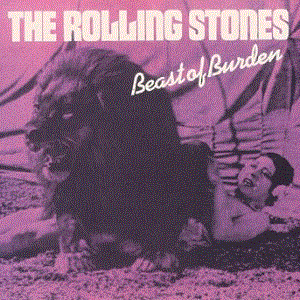
"Beast of Burden" is a song by the English rock band the Rolling Stones, featured on the 1978 album Some Girls. In 2004, Rolling Stone magazine ranked the song No. 435 on their list of "The 500 Greatest Songs of All Time".

"Heat Wave" is a 1963 song written by the Holland–Dozier–Holland songwriting team. It was first made popular by the Motown vocal group Martha and the Vandellas. Released as a 45 rpm single on July 9, 1963, on the Motown subsidiary Gordy label, it hit number one on the Billboard Hot R&B chart—where it stayed for four weeks—and peaking at number 4 on the Billboard Hot 100.
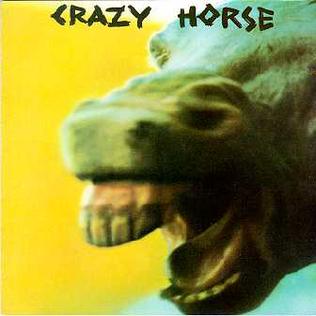
Crazy Horse is the debut album by Crazy Horse, released in 1971 by Reprise Records. It is the only album by the band to feature Danny Whitten recorded without Neil Young, and it peaked at No. 84 on the Billboard 200 album chart.

Live at the Fillmore East is a live album by Neil Young and Crazy Horse featuring guitarist Danny Whitten, released in 2006. It also has the distinction of being the first album released as part of the Neil Young Archives series of archival recordings.

"Mr. Soul" is a song recorded by the Canadian-American rock band Buffalo Springfield in 1967. It was released June 15, 1967, as the B-side to their fourth single "Bluebird" and later included on the group's second album Buffalo Springfield Again.
"Cowgirl in the Sand" is a song written by Neil Young and first released on his 1969 album Everybody Knows This Is Nowhere. Young has included live versions of the song on several albums and on the Crosby, Stills, Nash and Young album 4 Way Street. It has also been covered by The Byrds on their self-titled album. Like three other songs from Everybody Knows This Is Nowhere, "Cinnamon Girl", "Down by the River" and the title track, Young wrote "Cowgirl in the Sand" while he was suffering from the flu with a high fever at his home in Topanga, California.

Neil Young Archives Vol. 1: 1963–1972 is the first in a planned series of box sets of archival material by Canadian-American musician Neil Young. It was released on June 2, 2009, in three different formats - a set of 10 Blu-ray discs in order to present high resolution audio as well as accompanying visual documentation, a set of 10 DVDs and a more basic 8-CD set. Covering Young's early years with The Squires and Buffalo Springfield, it also includes various demos, outtakes and alternate versions of songs from his albums Neil Young, Everybody Knows This Is Nowhere, After the Gold Rush, and Harvest, as well as tracks he recorded with Crazy Horse and Crosby, Stills, Nash & Young during this time. Also included in the set are several live discs, as well as a copy of the long out-of-print film Journey Through the Past, directed by Young in the early 1970s.

"Up on the Roof" is a song written by Gerry Goffin and Carole King and recorded in 1962 by The Drifters. Released late that year, the disc became a major hit in early 1963, reaching number 5 on the U.S. pop singles chart and number 4 on the U.S. R&B singles chart. In the UK it was a top ten success for singer Kenny Lynch, whose version was also released in 1962.
"Funny How Time Slips Away" is a song written by Willie Nelson and first recorded by country singer Billy Walker. Walker's version was issued as a single by Columbia Records in June 1961 and peaked at number 23 on the Hot C&W Sides chart. The song has been featured in several live action films and television shows, such as in the first episode of the second season of AMC’s Better Call Saul and in the 2020 Netflix drama The Devil All the Time.
"Girl on the Billboard" is a 1965 single released by American country music singer Del Reeves. The novelty song was Reeves' fourth entry on the U.S. country chart and his only No. 1 single. "Girl on the Billboard" spent two weeks at No. 1 and a total of 20 weeks on the chart, in addition to reaching No. 96 on the Billboard Hot 100, and has become one of many country standards about lust.

"Everybody Knows This Is Nowhere" is a song written by Neil Young that was originally released as the title track of his 1969 album with Crazy Horse, Everybody Knows This Is Nowhere. The song was written earlier, and a different version was originally considered for Young's 1968 solo debut album Neil Young
